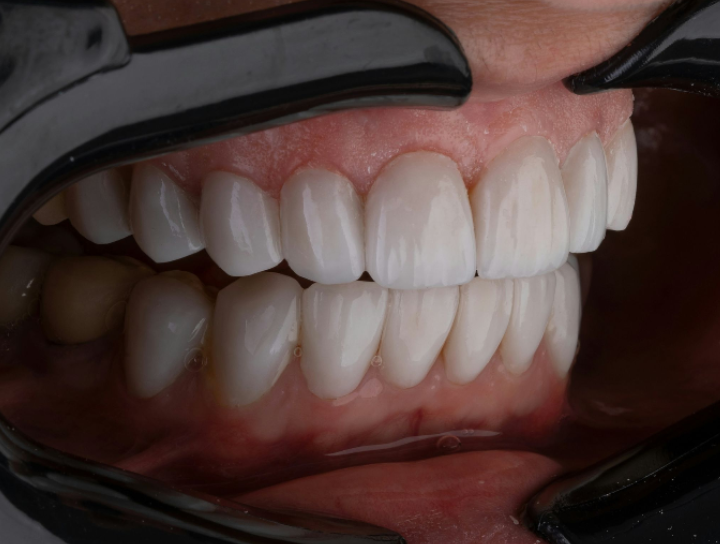Achieving Optimal Oral Health: The Importance of Periodontal Care
Understanding Periodontal Health
Periodontal health is fundamental to maintaining not just a healthy mouth, but also a healthy body. The term “periodontal,” which originates from the Greek words “peri” (around) and “odont” (tooth), encompasses the structures that support and surround the teeth—primarily the gums and the bone. These structures are crucial as they hold your teeth in place, offering the foundation for a healthy smile and proper chewing function. When these supporting structures become infected or inflamed, it leads to periodontal diseases. One of the most common forms is gum disease, which ranges from mild gingivitis to more severe periodontitis. Gum disease can lead to severe dental complications, including tooth loss if left untreated. Consulting a periodontist in Beverly Hills can provide the expertise for individuals requiring specialized care to diagnose and treat these issues effectively.
Common Symptoms of Periodontal Disease
Recognizing the early signs of periodontal disease cannot be overstated, as early diagnosis and treatment significantly improve the prognosis and outcome. One of the biggest challenges is that periodontal disease can be relatively painless until it reaches more advanced stages. However, several common symptoms should prompt immediate attention and a visit to your dentist:
- Red, swollen, or tender gums: Inflammation is often one of the earliest indicators of gum disease. Gums may appear bright red or deep purple and feel sensitive or tender to the touch.
- Bleeding during brushing or flossing: Healthy gums typically do not bleed. If you notice blood while brushing or flossing, it is a strong indication of underlying gum issues that need to be addressed.
- Persistent bad breath: Referred to as halitosis, chronic bad breath or a bad taste in your mouth can signify the presence of bacteria associated with gum disease. This can also be socially embarrassing and impact personal interactions.
- Loose or shifting teeth: As periodontal disease progresses, it can damage the structures that support your teeth, leading to looseness and movement. This is a clear indication of advanced periodontitis requiring immediate professional intervention.
- Receding gums: Gum recession, where your gums pull away from your teeth, is often caused by gum disease. This exposes more of the tooth root, making it sensitive and at a higher risk of decay. Early detection and treatment are key to preventing further damage.
The Impact of Neglected Periodontal Health
The ramifications of untreated periodontal disease extend far beyond oral health, significantly affecting overall well-being. Neglecting your gum health can lead to severe consequences such as tooth loss, affecting your ability to chew and speak properly, and impacting your overall quality of life. Research has shown a connection between periodontal disease and systemic health problems, including cardiovascular disease, diabetes, respiratory infections, and even complications in pregnancy. The Centers for Disease Control and Prevention (CDC) highlights that nearly half of adults aged 30 and older show signs of gum disease, emphasizing the prevalence and urgency of addressing this condition. A healthy mouth isn’t just good for your teeth and gums; it contributes significantly to your overall health and disease prevention efforts.
Steps to Maintain Healthy Gums
Maintaining healthy gums is an ongoing process that requires a combination of proper oral hygiene practices and regular dental care. Here are some vital steps to keep your gums healthy and prevent periodontal disease
- Flossing daily: Flossing is crucial for removing plaque and food particles from between teeth and along the gumline—areas your toothbrush can’t reach. If traditional flossing is challenging, consider using interdental brushes, water flossers, or other flossing aids.
- Using an antiseptic mouthwash: Rinse with an antiseptic mouthwash to reduce bacteria in the mouth, help prevent gum disease, and freshen your breath. Look for products that are ADA-approved for the best results.
- Visiting your dentist regularly: Maintaining healthy gums is easier with professional help! Schedule regular dental checkups where your dentist can detect early signs of gum disease and perform thorough cleanings to remove stubborn plaque and tartar, even what your daily brushing and flossing might miss.
- Avoiding tobacco products: Tobacco use is a major risk factor for gum disease and oral cancer. Quitting smoking or any tobacco products can significantly improve your oral and overall health.
Treatment Options for Periodontal Disease
Depending on the severity of periodontal disease, various treatment options are available. These treatments range from non-surgical approaches to more invasive surgical procedures aimed at restoring the health and function of gums and supporting structures.
Non-surgical Treatments
These treatments, often used in the initial stages of gum disease, focus on removing harmful bacteria and promoting gum health. Scaling, for example, cleans plaque and tartar buildup from both the tooth surface and below the gumline. This is followed by root planing, which smooths the root surfaces, making it harder for bacteria to stick and allowing the gums to reattach to the teeth. Sometimes, your dentist might recommend additional measures like antibiotics or special mouthwashes to reduce infection and bacteria levels in your mouth.
Surgical Treatments
Surgical intervention could be required for optimal oral health when gum disease progresses. These can include:
- Flap surgery: Pocket reduction surgery involves lifting back sections of the gum to remove tartar deep within the gum pockets and suturing the gums back for easier maintenance. This helps reduce pocket depth, making it easier to keep the area clean.
- Bone grafts: If periodontal disease has damaged or destroyed the bone around your teeth, a bone graft can help regenerate lost bone and restore stability. This procedure uses natural or synthetic bone to promote new bone growth and provide a strong foundation for your teeth.
- Soft tissue grafts: To reinforce thin or receding gums and cover exposed roots, a soft tissue graft involves taking tissue from another part of your mouth (such as the roof of your mouth) and attaching it to the affected area. This helps protect roots, reduce sensitivity, and improve the appearance of your gums.
The Role of Regular Dental Visits
Regular dental visits are a critical component of maintaining periodontal health. Dentists are essential in identifying early signs of gum disease, which might not be noticeable to the untrained eye. Routine professional cleanings help remove plaque and tartar that daily brushing and flossing might miss, maintaining oral health and preventing disease progression. Furthermore, your dental visits are an opportunity to receive personalized advice on improving your at-home oral care routine and addressing any concerns you might have about your gum health. By establishing a strong partnership with your dentist, you can effectively monitor and maintain your periodontal health.
In Conclusion
Prioritizing periodontal care is essential for maintaining optimal oral health and preventing severe dental and systemic health issues. By staying informed about the symptoms of periodontal disease, practicing good oral hygiene, and seeking timely dental care, you can achieve and maintain healthy gums for life.
Stay in touch to get more updates & news on Stylecarter !






